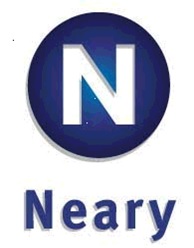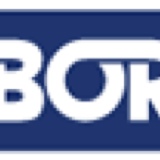Title Page
-
Conducted on
-
Prepared by
-
ROI Office Location
-
Name of ROI Employee Observing (include all names if multiple employees onsite)
-
Client Name
-
Location
-
Weather (ex. Clear, Partly Cloudy, Cloudy, Rain, Snow, Severe Weather) With Temp. & Wind Speed
Resource Options Site Safety Inspection - Behaviors
Behaviors
-
Eyes on path/looks in direction of travel?
-
Looks back prior to stepping backwards?
-
Pushes instead of pulls when possible?
-
Avoids overhead work when possible?
-
Lifts with legs not back when possible?
-
Avoids lifting more than one can lift safely?
-
Keeps load close to body when lifting?
-
Uses lift assist device for heavy loads?
-
Avoids lifting unstable loads?
-
Works at safe pace/not rushed?
Resource Options Site Safety Inspection - Housekeeping<br>
Housekeeping
-
Worksite reasonably organized/good housekeeping? 1926.25(a)
-
Combustible scrap/debris removed at regular intervals? 1926.25(b)
-
Material staging area kept reasonably organized? 1926.25(a)
-
Garbage disposed of at frequent/regular intervals? 1926.25
-
No protruding nails on scrap lumber? 1926.25
-
Containers used for oily/flammable waste covered? (1926.25)
-
Materials safely stored/stacked? 1926.250(a)(1)
-
Aisles/passageways unobstructed/in good repair? 1926.250(a)(3)
-
Nails withdrawn before stacking lumber? 1926.250(b)(8)(i)
-
Housekeeping maintained in storage areas? 1926.250(c)
-
Chute used to drop materials outside building? 1926.252(a)
-
Debris drop zone properly barricaded? 1926.252(b)
-
Scrap lumber/waste/rubbish promptly removed? 1926.252(c)
Resource Options Site Safety Inspection - PPE
PPE
-
PPE provided as required? 1926.95(a)
-
PPE used/worn as required? 1926.95(a)
-
PPE maintained in good/sanitary condition? 1926.95(a)
-
Replacement PPE readily available? (Best Practice)
-
Eye protection (ANSI approved) w/side shields in use? 1926.102(a)(1)&(2)
-
Face protection used when required? 1926.102(a)(1)
-
Hard hats worn as required? 1926.100(a)
-
Hand protection worn when needed? 1926.28(a)
-
Safety footwear worn as needed? 1926.28(a)
-
Respirators provided/used as required? 1910.134(a)
-
Hearing protection used as required? 1926.52(a)
-
High-visibility clothing worn as required? 1926.28(a)
-
PFD worn when working over/near water? 1926.106(a)
Resource Options Site Safety Inspection - Ladders/Stairs
Ladders/Stairs
-
Ladders inspected/no visible defects? 1926.1053(b)(15)&(16)
-
Is an (A-Frame) stepladder (which is a type of' self-supporting ladder) leaning against the wall being used as a non-self-supporting ladder (some new A-frames are designed to do so)
-
Side rails extend 3 ft. above landing surface? 1926.1053(b)(1)
-
Ladders set up at 4:1 angle? 1926.1053(b)(5)(I)
-
Ladders set up on stable/level surface? 1926.1053(b)(6)
-
Top of ladder secured to prevent side shift? 1926.1053(b)(1)
-
Base of ladder secured when conditions warrant? 1926.1053(b)(6)
-
Ladders used correctly/as intended by mfg? 1926.1053(b)(4)
-
Spreaders fully engaged on stepladders? 1926.1053(a)(8)
-
Workers avoid using top 2 steps of stepladder? 1926.1053(b)(13)
-
Area at top and bottom of ladder kept clear? 1926.1053(b)(9)
-
At least one hand free to grasp ladder? 1926.1053(a)(22)(ii)
-
Handrails on stairs with 4 or more risers? 1926.1052(c)
Resource Options Site Safety Inspection - Fall Protection
Fall Protection
-
Suitable fall protection provided? (working 6+ ft) 1926.501(b)(1)
-
Steps taken to prevent falling object hazards? 1926.501(c)
-
Steps taken and adequate to prevent falls thru holes? 1926.501(b)(4)(i)&(ii)
-
Guardrails installed, maintained? 1926.502(b)
-
Toeboards erected to prevent falling objects? 1926.502(j)(1)-(4)
-
Harnesses inspected/maintained in good condition? 1926.502(d)(21)
-
Harnesses worn/fitted properly? 1926.503(c)(3)
-
Lanyards inspected, maintained, spec. tag intact/legible? 1926.502(d)(21)
-
Suitable anchorage provided/used? 1926.502(d)(15)
-
Floor hole covers secured, substantial, marked? 1926.502(i)(2)-(4)
-
Control line 6 ft. from leading edge for roofing activities? 1926.502(g)(1)(i)
-
Warning line 15 ft. back for non-roofing activities? (OSHA Interp Letter)
-
Warning line erected on unprotected roof edge? 1926.502(f)(1)
-
Workers trained on recognizing/minimizing fall hazards? 1926.503(a)
-
Fall Protection training certified/documented? 1926.503(b)
Resource Options Site Safety Inspection - Trenching/Excavation
Trenching/Excavation
-
Employees protected from cave-in by protective system (if equal to or greater than 5')? 1926.652(b) or (c)
-
Sloping/benching adequate for soil type? 1926.652(b)
-
Spoils/material/equipment set back 2 feet from edge? 1926.651(j)(2)
-
Proper/safe means of access/egress provided? 1926.651(c)(2)
-
Travel distance to egress no more than 25 feet? 1926.651(c)(2)
-
Surface encumbrances removed or supported? 1926.651(a)
-
Water runoff controlled to prevent accumulation? 1926.651(h)(3)
-
Access prohibited when water accumulation is uncontrolled? 1926.651(h)(1)
-
Manual/visual test used to confirm soil classification? 1926.651
-
Workers exposed to traffic wearing high-viz clothing? 1926.651(d)
-
Stability of adjacent structures ensured? 1926.651(i)(1)
-
Soil not excavated more than 2 ft. below protective system? 1926.652(e)(2)(i)
-
Pavements/structures not undermined unless supported? 1926.651(i)(3)
Resource Options Site Safety Inspection - Tools (Hand & Power)
Tools (Hand & Power)
-
Hand and power tools in safe operating condition? 1926.300(a)(1)
-
Guards in place/functional on power tools? 1926.300(b)(1)
-
Impact tools free of mushroom heads? 1926.301(c)
-
Handles free of splinters/cracks and kept tight in tool? 1926.301(d)
-
Power tools double-insulated or grounded? 1926.302(a)(1)
-
Electric cords NOT used to hoist/lower power tools? 1926.302(a)(2)
-
Secondary restraint used on pneumatic tools to prevent hose whip? 1926.302(b)(1)
-
Safety clips/retainers installed/maintained on pneumatic impact tools? 1926.302(b)(2)
-
Air hose NOT used to lower/hoist pneumatic tools? 1926.302(b)(6)
-
Power tools stopped during refueling/maintenance? 1926.302(c)(1)
-
Angle grinders equipped with safety guards? 1926.303(b)(1)
-
Circular saws adequately guarded? 1926.304(d)
-
Hand-fed ripsaw (table saw) adequately guarded? 1926.304(i)
Resource Options Site Safety Inspection - Hazard Communication
Hazard Communication
-
SDS for hazardous chemicals readily available? 1910.1200(g)(8)
-
Chemicals (in supplier container) properly labeled/legible? 1910.1200(f)(6)(i)
-
Chemicals (in secondary container) properly labeled/legible? 1910.1200(f)(6)(ii)
Resource Options Site Safety Inspection - Exits/Egress
Exits/Egress
-
Exits available and free of obstructions? 1926.34(a)
-
Exits and access to exits marked with signs? 1926.34(b)
Resource Options Site Safety Inspection - Aerial Work Platforms
Aerial/Boom Lifts
-
Workers tied off to approved anchorage point in basket? 1926.453(b)(2)(v)
-
Workers not tied off to adjacent structure/equipment? 1926.453(b)(2)(iii)
-
Operator(s) trained and/or authorized? 1926.453(b)(2)(ii)
-
Both feet on floor of basket? 1926.453(b)(2)(iv)
-
Boom/basket load limits not exceeded? 1926.453(b)(2)(vi)
-
Aerial lift stationary when elevated? 1926.453(b)(2)(viii)
-
Aerial lift controls clearly marked/identified? 1926.453(b)(2)(ix)
-
Aerial lifts inspected prior to use/documented? 1926.453(b)(2)(i)
-
Aerial lifts at least 10 feet from energized power lines? ANSI/SIA 92.5
-
Access gate/opening closed when working in lift? ANSI/SIA A92.5
-
Operated on level surface per equipment specs? ANSI/SIA A92.5
-
Outriggers (when available) utilized as needed? ANSI/SIA A92.5
-
Work platform kept reasonably clear of debris? ANSI/SIA A92.5
Resource Options Site Safety Inspection - Scissor Lifts
Scissor Lifts
-
Lift inspected/free of defects? 1926.451(f)(3)]
-
Lift operated on level surface/free of obstructions? 1926.452(w)(6)(i)
-
Outriggers (if required) used as needed? 1926.452(w)(5)
-
Both feet on floor of lift? 1926.453(b)(2)(iv)
-
Employees utilize PFAS when working from scissor lift? (Best Practice)
-
Workers trained on use of scissor lift? 1926.454(a)
-
Scissor lifts at least 10 feet from energized power lines? ANSI/SIA 92.6
-
Directional controls clearly marked? ANSI A92.6
-
Access gate/opening closed when working in lift? ANSI/SIA A92.6
-
Are lifts operated within the wind speed service limit? ANSI/SIA 92.6
-
Barricades erected to keep bystanders clear (as needed)? (Best Practice)
-
Floor of lift kept reasonably clean? (Best Practice)
Resource Options Site Safety Inspection - Concrete/Masonry
Concrete/Masonry
-
Rebar guarded to eliminate impalement hazard? 1926.701(b)
-
Workers avoid working under buckets? 1926.701(e)(1)&(2)
-
Connectors used to secure pressurized air hoses? 1926.702(e)(2)
-
Masonry saw blades guarded? 1926.702(i)(1)
-
Shoring equipment inspected? 1926.703(b)(1)
-
Base plates secured to foundation/formwork? 1926.703(b)(6)
-
Limited access zone equal to wall height plus 4 feet? 1926.706(a)
-
Limited access zone strictly enforced? 1926.706(a)(4)
-
Walls over 8 feet braced to prevent collapse? 1926.706(b)
Resource Options Site Safety Inspection - Confined Space
Confined Space
-
Hazards of space evaluated prior to entry? 1926.1204(b)
-
Procedures in place for safe entry? 1926.1204(c)
-
Testing/monitoring equipment available? 1926.1204(d)
-
Ventilation equipment available? 1926.1204(d)(1)
-
Communications equipment available as needed? 1926.1204(d)(2)
-
Adequate lighting available as needed? 1926.1204(d)(5)
-
Equipment for safe egress available as needed? 1926.1204(d)(7)
-
Rescue and emergency equipment provided? 1926.1204(d)(8)
-
Atmosphere tested prior to entry? 1926.1204(e)(1)(i)
-
Periodic and/or continuous air monitoring completed? 1926.1204(e)(1)(ii)
-
Attendant available outside permit space? 1926.1204(f)(1)&(2)
-
Employee responsibilities defined/training completed? 1926.1204(h)
-
Procedures in place for summoning rescue services? 1926.1204(i)
-
Entry permit available for review? 1926.1205(c)
-
Employees received effective training? 1926.1207(a)
Resource Options Site Safety Inspection - Electrical Safety
Electrical Safety
-
Ground pin attached to electrical cords? 1926.404(f)(6)
-
GFCI used for temporary power connections? 1926.404(b)(1)(ii)
-
Flexible cords maintained in good condition? 1926.416(e)(1)
-
Are any electrical cords lying in free standing water
-
Light bulbs protected from accidental breakage? 1926.405(a)(2)(ii)(E)
-
All sockets in temporary lighting have bulbs? 1926.416(a)(1)
-
Temporary lights not suspended by electric cords? 1926.405(a)(2)(ii)(F)
-
Cords protected/kept clear of work areas or walkways? 1926.416(b)(2)
-
Signs posted restricting access to locations w/exposed live parts? 1926.403(i)(2)(iii)
Resource Options Site Safety Inspection - Fire Safety
Fire Safety
-
Fire extinguishers in good condition/fully charged? 1926.150(a)(4)
-
Travel distance to fire extinguisher within 100 feet? 1926.150(c)(1)(i)
-
Fire extinguisher within 50 ft. of flammables? 1926.150(c)(1)(vi)
-
Minimum one fire extinguisher per floor? 1926.150(c)(1)(iv)
-
Fire extinguishers conspicuously located? 1926.150(a)(3)
-
Fire extinguishers mounted? (NFPA 10-6.1.3.8)
-
Gasoline stored in approved safety can or DOT container? 1926.152(a) / Interp Ltr
-
Smoking prohibited where fire hazard exists? 1926.151(a)(3)
-
Fire extinguisher kept near gas powered equipment? (Best Practice)
Resource Options Site Safety Inspection - Health Hazards<br>
Health Hazards
-
Noise exposures monitored/controlled? 1926.52
-
Extreme heat exposures monitored/controlled? (5a1)
-
Extreme cold exposures monitored/controlled? (5a1)
Resource Options Site Safety Inspection - Respiratory Protection<br>
Respiratory Protection
-
Respiratory Protection Program established? 1910.134(c)(1)
-
Respirators used in hazardous atmospheres? 1910.134(a)(2)
-
Respirators properly maintained/sanitary? 1910.134(h)(2)(i)
-
Medical evaluation completed prior to fit-test? 1910.134(e)(1)
-
Fit-test completed prior to initial use/annually? 1910.134(f)(2)
-
Facial hair does not compromise respirator seal? 1910.134(g)(1)(i)
-
Approved respirator for application used? 1910.134(d)(1)(i)
-
Employees trained in proper respirator use? 1910.134(k)(1)
Resource Options Site Safety Inspection - Safety Training<br>
Respiratory Protection
-
Toolbox talks completed daily? 1926.21(b)(2)
-
Toolbox talks completed weekly? 1926.21(b)(2)
-
Toolbox talks documented? (Best Practice)
-
Job-specific safety training provided/documented? OSHA Pub. 2254
-
Safety Orientation Training provided? OSHA Pub 2254
Resource Options Site Safety Inspection - Scaffolds (Rolling/Baker)
Scaffolds (Rolling/Baker)
-
Scaffolds inspected/free of defects? 1926.451(f)(3)
-
Working platforms fully planked/decked? 1926.451(b)(1)
-
Platform clean/free of excessive debris? 1926.451(f)(13)
-
Only supplies needed stored on scaffolds? 1926.250(b)(5)
-
Fall protection provided above 10 feet? 1926.451(g)(1)
-
Employee remains within wheels/supports of scaffold? 1926.452(w)(6)(v)
-
Wheel/caster brakes operable and set as required? 1926.452(w)(2)
-
Workers trained on use of scaffolds? 1926.454(a)
Resource Options Site Safety Inspection - Other/Misc.
Other/Misc.
-
Pre-shift stretching exercises completed? (Best Practice)
-
Steps taken to address icy/slippery surfaces? (Best Practice)
-
Surfaces reasonably level/free of slip/trip/fall hazards? (Best Practice)
-
Construction areas properly illuminated? 1926.56(a)
-
Are frequent/regular inspections of the jobsite completed? 1926.20(b)(2)
-
Defective equipment tagged or removed from jobsite? 1926.20(b)(3)
-
Is worksite free of unsafe conditions? Sec. 5(a)(1)










